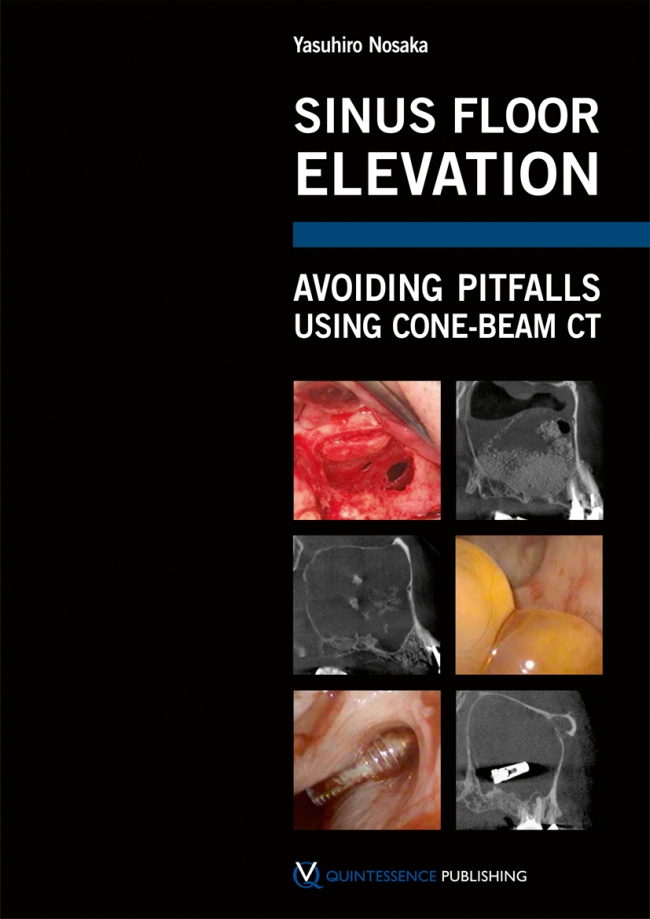The International Journal of Oral & Maxillofacial Implants, 6/2005
Pages 837-842, Language: EnglishNosaka, Yasuhiro / Kobayashi, Masaki / Kitano, Saki / Komori, TakahidePurpose: This study was designed to evaluate the healing process in horizontal alveolar ridge distraction of the narrow alveolus in dogs.
Materials and Methods: Six beagle dogs weighing approximately 9 to 10 kg were used in this experiment. Horizontal alveolar ridge distraction was performed in the right mandible, where the premolars had been extracted 12 weeks previously. Twelve days after the completion of distraction, the lengthening apparatus was removed. The distracted site was evaluated at 12 and 24 weeks after the removal.
Results: At 12 weeks, thin woven bone was observed at the distracted site growing from the surface of the original lingual cortical bone toward the transport segment. At 24 weeks, the distracted site had fully changed into new mature lamellar bone, but the transport segments had been almost completely resorbed.
Discussion: Horizontal alveolar ridge distraction was performed successfully in beagle dogs even though the apparatus was removed 12 days after the completion of distraction. The most important feature of this technique is the resorption of the transport segment.
Conclusion: Horizontal alveolar ridge distraction can be a beneficial technique for augmenting the alveolar ridge horizontally in the buccolingually reduced alveolar process before the placement of implants.
Keywords: alveolar ridge augmentation, alveolar ridge distraction, distraction osteogenesis
The International Journal of Oral & Maxillofacial Implants, 4/2003
Pages 500-504, Language: EnglishShimpuku, Hitomi / Nosaka, Yasuhiro / Kawamura, Tatsuya / Tachi, Yoichi / Shinohara, Mitsuko / Ohura, KiyoshiPurpose: At stage II surgery during dental implant treatment, early marginal bone loss around the implant occasionally occurs despite a lack of apparent causal events, and the etiology of this bone loss is unclear. This study was designed to investigate whether the bone morphogenetic protein-4 (BMP-4) genetic polymorphism is associated with early marginal bone loss around implants.
Materials and Methods: The BMP-4 polymorphism was detected by restriction fragment length analysis using HphI digestion after polymerase chain reaction. A total of 262 implants were placed in 41 patients, and early marginal bone loss was observed in 25 of the 109 maxillary implants and 14 of the 153 mandibular implants.
Results: In the mandible, the patients with the BMP-4 AV genotype had a significantly higher rate of occurrence of marginal bone loss than those with the BMP-4 VV genotype (P = .012). According to multiple logistic regression analyses, the odds ratio of the AV versus the VV BMP-4 genotype was 8.106 between patients with and those without bone loss in the mandible (95% CI = 1.30 to 50.51; P = .025).
Discussion: These results suggest that the BMP-4 genetic polymorphism influences early marginal bone loss around implants.
Conclusion: While perhaps premature in recommendation, genetic screening before implant surgery may prove to be a very useful aid to consider the risk of implant treatment.
The International Journal of Oral & Maxillofacial Implants, 2/2000
Pages 185-192, Language: EnglishNosaka, Yasuhiro / Tsunokuma, Masayuki / Hayashi, Hidekazu / Kakudo, KenjiThis study investigated the possibility of achieving osseointegration of implants placed in a distracted site during the consolidation period. Four healthy male mongrel dogs were used in this experiment. A subperiosteal corticotomy around the mandible was performed between the left mandibular premolar and first molar. After a 7-day latency period for soft tissue healing, the distraction was performed at the rate of 1 mm per day for 14 consecutive days to allow for 14 mm of elongation, using an extraoral distraction device. Three weeks after the completion of distraction, screw-type implants were placed in the distracted site. Twenty-four weeks after placement of the implants, they were stable, and osseointegration had been achieved physically, radiographically, and histologically. These results suggest the possibility of shortening the period of implant treatment by using the distraction osteogenesis technique.
Keywords: bone regeneration, consolidation period, distraction osteogenesis, osseointegrated implant, osseointegration





